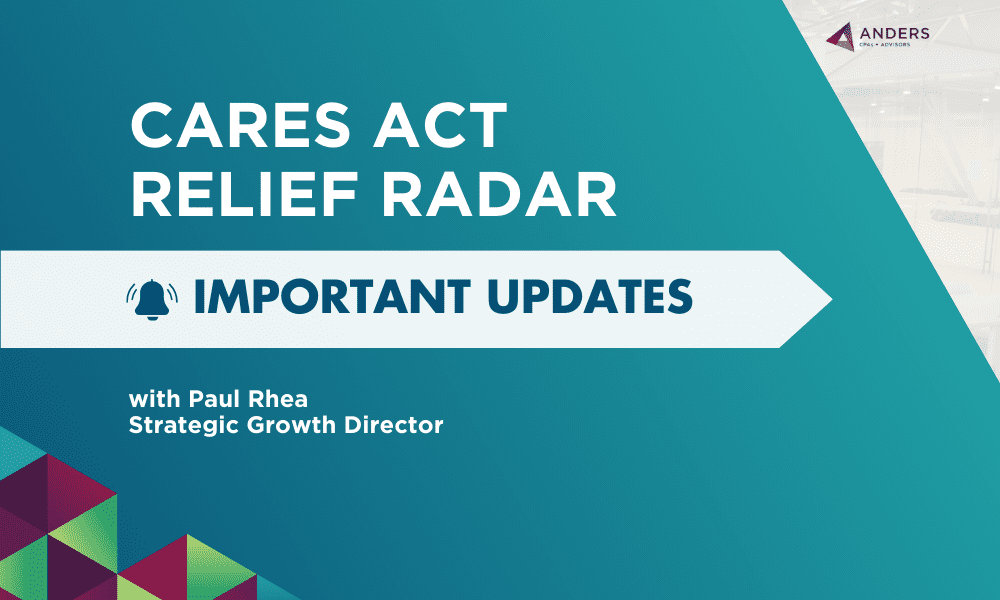The Not-for-Profit sector has finally received some good news as it relates to COVID relief and the new COVID Relief package recently signed into law. The biggest change is that industry organizations and professional associations are now eligible for PPP loans, which they weren’t before. This is great news for 501(c)(6) not-for-profits, as it allows them more flexibility in how to spend their money and provides some much-needed relief to those hit hard during this pandemic. Here are some of the key provisions for NFPs:
Paycheck Protection Program (PPP) loans administered by the Small Business Administration
In the recent bill passed, Congress appropriated more funding for this popular SBA program, with the biggest news being that PPP Loans are now available to 501(c)(6) organizations such as industry and professional associations. Previously, only 501(c)(3) organizations could qualify for this program. To make sure 501(c)(6) organizations are meeting all qualifications, consulting with their accountants and banks is an important first step, as there are specific thresholds regarding lobbying activities. The program now also has provisions for a “second draw” for entities that employ 300 or fewer employees and demonstrate at least a 25% reduction in gross revenues between the same quarters in 2020 and 2019. The “gross revenues” amount has also been clarified. The maximum second draw loan amount is $2 million.
PPP Loan Forgiveness
The new legislation has updated the costs eligible for forgiveness to include:
- Worker protection and facility modification expenditures, including personal protective equipment, to comply with COVID-19 federal health and safety guidelines,
- Expenditures to suppliers that are essential at the time of purchase to the recipient’s current operations,
- Certain operating costs, such as software and cloud computing services and accounting needs
- Covered property damage costs related to property damage and vandalism or looting due to public disturbances in 2020 that were not covered by insurance or other compensation
As before, 60% of the funds must be spent on payroll over a covered period for the Organization to be eligible for full forgiveness. The covered period is defined as any time period, at the election of the borrower, between 8 and 24 weeks. Also, the maximum loan amount has been reduced to $2 million. The new legislation has included a simplified forgiveness application process for loans of $150,00 or less. (The SBA is creating this application.)
Charitable Giving Deduction
The new legislation has kept the $300 above-the-line deduction for 2021 (which will be $600 deduction for couples filing jointly in 2021). This is great news for many donors who do not itemize their deductions. The bill also extends the increased limits on deductible charitable contributions for individuals who itemize (the AGI cap rule) through 2021.
Employee Retention Tax Credit
The legislation extends the Employee Retention Tax Credit through 6/30/2021. It also improves the refundable payroll tax credit by reducing the amount of required year-over-year decline in gross receipts from 50% to 20%, while increasing the credit from 50% to 70% of workers’ “creditable wages” of up to $10,000 for each of the first two quarters, for a maximum per worker benefit of $14,000. The ERTC expands full benefit to all employees of employers with 500 or fewer employees; larger employers can apply the credit only to workers who are paid but are not working. Finally, it provides that employers who receive Paycheck Protection Program (PPP) loans may still qualify for the ERTC with respect to wages that are not paid for with forgiven PPP proceeds. (See our Anders Blog on the ERTC)
Updated 9/15/2023: Due to the IRS ERTC moratorium, Anders will no longer be accepting new ERTC clients until the IRS issues additional guidance related to this moratorium and the options available to affected businesses. Learn more about the IRS’s ERTC moratorium.
Save our Stages
There is a lot of excitement regarding the new “Save our Stages” program, which will provide grants of up to $15 million for eligible businesses and not-for-profits (including performance venues, independent movie theaters, and cultural institutions) that demonstrate a 25 percent reduction in revenues in 2020. These grants will be administered by the Small Business Administration. Eligible entities will be able to apply for an initial grant that amounts to roughly six months of 2019 gross revenues, capped at $10 million dollars. If funds remain, eligible entities may apply for a supplemental grant of up to 50 percent of the initial grant, with total grant amounts (initial and supplemental) capped at $10 million per grant recipient. Of the $15 billion in the program, $2 billion will be set aside just for venues and creators that employ 50 or fewer full-time employees. Those funds will be broadly available to entities above that threshold if any such funds remain 60 days after implementation of the program begins. Applications for the program should be available within a few weeks (the timing is still up in the air.)
Our advisors are closely following COVID-19 relief efforts and will continue to publish insights to keep you informed about potential tax impacts and benefits. Visit our COVID-19 Resource Center for more insights or contact Anders below to discuss how the CARES Act affects your not-for-profit organization.





